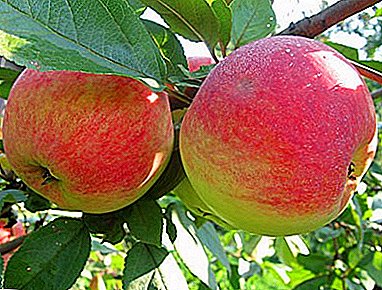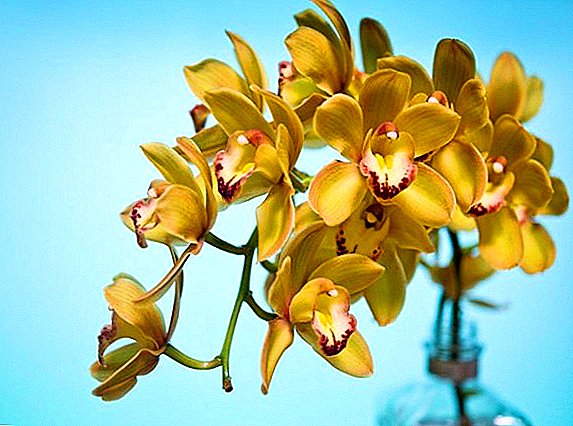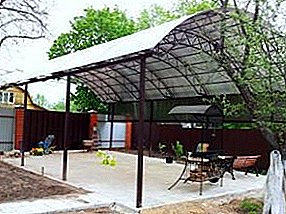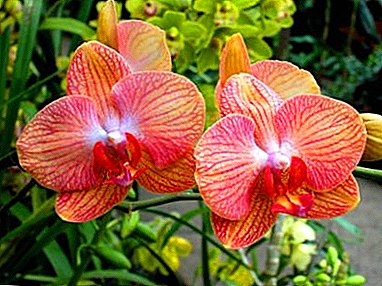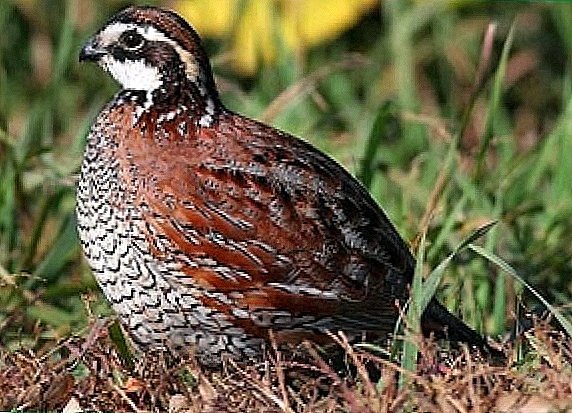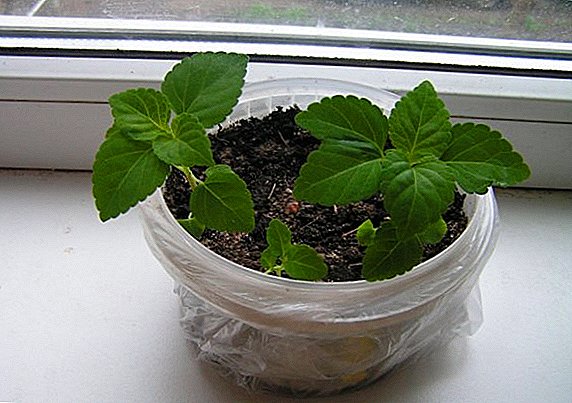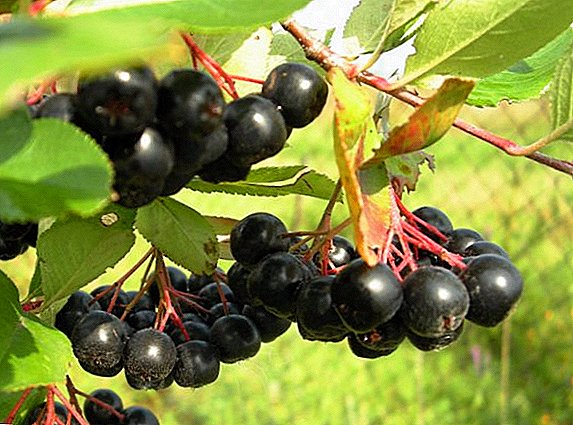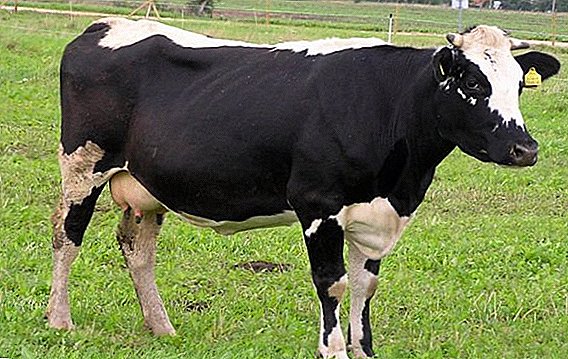 If you intend to start breeding meat and dairy cows that would not be particularly demanding to care, would not require significant economic costs for the maintenance, but at the same time would show decent indicators of financial productivity, pay attention to the Tagil breed of cows. This breed does not beat records in any of the indicators of productivity, but nevertheless it is in extremely wide demand among farmers because of the rather high organoleptic and qualitative properties of meat and milk. In this article we will talk in more detail about such a breed of cows as Tagil.
If you intend to start breeding meat and dairy cows that would not be particularly demanding to care, would not require significant economic costs for the maintenance, but at the same time would show decent indicators of financial productivity, pay attention to the Tagil breed of cows. This breed does not beat records in any of the indicators of productivity, but nevertheless it is in extremely wide demand among farmers because of the rather high organoleptic and qualitative properties of meat and milk. In this article we will talk in more detail about such a breed of cows as Tagil.
History of origin
The formation of the Tagil breed of cows took place at the turn of the XYIII and XIX centuries in several stages, during which the local Tagil cattle were systematically crossed with the Kholmogory and Dutch breeds of cows.  In the course of such cross-breeding, the local Ural cattle acquired more impressive indicators of milkiness and acquired a less unstable and more impressive skeleton.
In the course of such cross-breeding, the local Ural cattle acquired more impressive indicators of milkiness and acquired a less unstable and more impressive skeleton.
It should be noted that before that the cattle bred in the territory of the then Urals was distinguished by negligibly weak indicators in almost all important parameters.
Did you know? The average cow performs about 40 thousand chewing movements per day, on average, chewing food up to 40-45 times per minute.
The modern Tagil breed of cows carries in itself the genes of a huge variety of breeders of the highest quality, including record-breakers and winners of many exhibitions and competitions, but another part of their native blood, the original Ural, greatly weakens their potential.
Today, this breed of cows is considered to be genofodic (stored as a source of primary gene data) and is actively bred in the Perm and Sverdlovsk regions. 
Appearance and physique
The appearance of the representatives of this breed has the following characteristics:
- this breed of cattle occurs in almost all possible and known colors for humanity characteristic of cows. In households, one can find white, spotted, black, red, black and motley, red and motley, piebald, gray and brown mutts of Tagil breed. All of them have the general strength of the backbone and great variability in the structure of the muscular corset, which can both sit quite aesthetically and make a powerful impression, or hang down in a bag, being barely fixed on the backbone;
- average height these little cows at the withers range from 125 to 130 centimeters, while the mass of the adult female reaches about 450-500 kilograms, and the male - around 750-900 kilograms. Calves are born weighing about 30-35 kilograms, and after six months of life they reach a weight of 160-180 kilograms;
Did you know? Cows are very socially active creatures and always tend to be in someone else's company. If you see that the cow is trying to be alone, then she is either going to give birth or sick.
- head in all representatives of the breed of medium size, proportional to the body, with symmetrically arranged eyes and ears. The nose is large, moist, cut into two equal halves by a vertically passing furrow. The mouth is rather flat, with well developed lips and teeth, constantly chewing. The neck is long and thin, it connects the torso with the head at an angle of 45-50 °;
- torso quite powerful chest - wide, with protruding central part, sometimes its lower part lies slightly lower than the lower level of the abdomen. The stomach almost never bulges, elastic and round, at the lowest point is almost not covered with wool, goes into the udder at an angle of 180 °. Udder - is located in a fairly narrow-looking area of the pelvis, it is extremely well developed, the visual volume is 6-8 liters, it has properly placed nipples, it is covered with rather elastic and dense skin;
- back - straight, flat, wide, has a clearly defined median line, which is formed from the spinous processes of the vertebrae, passes into the tail at an angle of 180 °. Tail - reaches the border of the lower third of the hind legs, quite developed, powerful, thick, has a large brush at the end, designed to disperse insects. Limbs - slightly crooked, located at a small angle relative to the ground, often there is a slight valgus deformity of both the front and hind legs;
- the bulls they wear small (5-8 centimeters) horns that are almost never used as a weapon, females are almost completely crushed (hornless). Almost the whole body of the Tagil cow, except for the nose, horns and a small section of the lower abdomen, is covered with a soft, short, pleasant to the touch, velvety coat. Hooves - powerful, thick (up to 10-15 centimeters), often darker shades, paired.

Meat and dairy characteristics
As mentioned earlier, this breed of cattle does not break records in any of the individual sectors of animal husbandry, but in general terms, these animals show quite strong and confident results in all the necessary parameters.
Important! When buying a Tagil cow, first of all pay attention to its udder, all other parameters are quite variable and subject to individual changes.
Here are all the necessary numbers:
- average milk yield per year - 3500-4000 kg;
- distribution indicators - + 30-50% of the initial indicators, within 3-5 months;
- the number of required milk feeds per day - 2;
- milk fat content - 4-4.5%;
- milk protein index - 3-3.5%;
- the organoleptic properties of milk - 8/10 (there is a slight taste of green grass, which is easily eliminated by boiling);
- meat weight gain dynamics - +150 kg for 6 months;
- the average weight of the carcass before parsing into its component parts - cows is 400-450 kg; bulls - 700-850 kg;
- slaughter meat yield - 53-60%;
- organoleptic properties of meat - 7/10 (much depends on the age of the slaughtered animal and its way of life).

Advantages and disadvantages
Summing up, we can say that this breed of cattle is one of the best options for breeding by those owners who have not decided for sure yet which particular meat or dairy parameter they want to develop in the animals raised on their farm.
The meat and dairy breeds of cows also include such as Simmental, Bestuzhevskaya, Caucasian brown, Sychevskaya, Schwyzka, Yakut mini-cow, Krasnogorbatovskaya.
Steadily above average indicators in any of the industries make them universal cows that can satisfy any whims of even the most demanding owners.
Here is a list of the strengths of this breed:
- universality in meat and dairy parameters: higher rates than dairy in meat breeds, and meat than in dairy;
- cows have a high distribution rate and a fairly good quantitative indicator;
- relatively small purchase price of a representative of a similar breed (800-1000 US dollars);
- no need for careful and scrupulous care of the external parameters of these animals, which does not prevent them from maintaining a presentable and fresh look;
- there is no need to build a separate room for keeping such cows, they are perfectly coexist with other animal species;
- almost never attack people, other animals and their relatives;
- tolerate a harsh, cold, northern climate and are well adapted to poor pastures;
- the modern breed has eliminated the problem with the almost completely absent hearing from the indigenous representatives of the livestock of the Ural zone;
- excellent scent, thanks to which the cow can move throughout the grazing, almost without using sight;
- do not lose the ability to reproduce throughout almost their whole life.
 Among the negative aspects of keeping such a cattle breed on a farm are the following:
Among the negative aspects of keeping such a cattle breed on a farm are the following:- slight herbal flavor in fresh milk;
- too low protein content in milk and low fat content;
- dependence of taste of meat of slaughtered representatives of the breed on their age, nutrition and metabolic activity of the organism;
- minor exterior flaws (the presence of uncoated places on the body, visually curved legs, thin, unpresentable neck, etc.);
- the unpopularity of the breed outside the Urals, and, consequently, a decrease in the probability of acquiring it there;
- Komolost prevents representatives of the breed from defending themselves from various predators during grazing;
- full inheritance of all negative aspects of appearance and productivity from parents to children (however, for justice, it should be noted that all positive aspects are also inherited almost to the full extent);
- The problems of grazing in the herd, traditional for cattle in a given region, when each of its representatives is trying to go his own way, are preserved.
Important! The meat of the Tagil breed of cows shows itself extremely well as an ingredient for pickling, kebabs and other types of roasting in various forms. Milk produces excellent cheeses, cottage cheese, sour cream and cream.
These are the main features of the representatives of the Tagil breed of cows. Due to its unpretentiousness and excellent characteristics, this breed will help you get a good profit from breeding.




